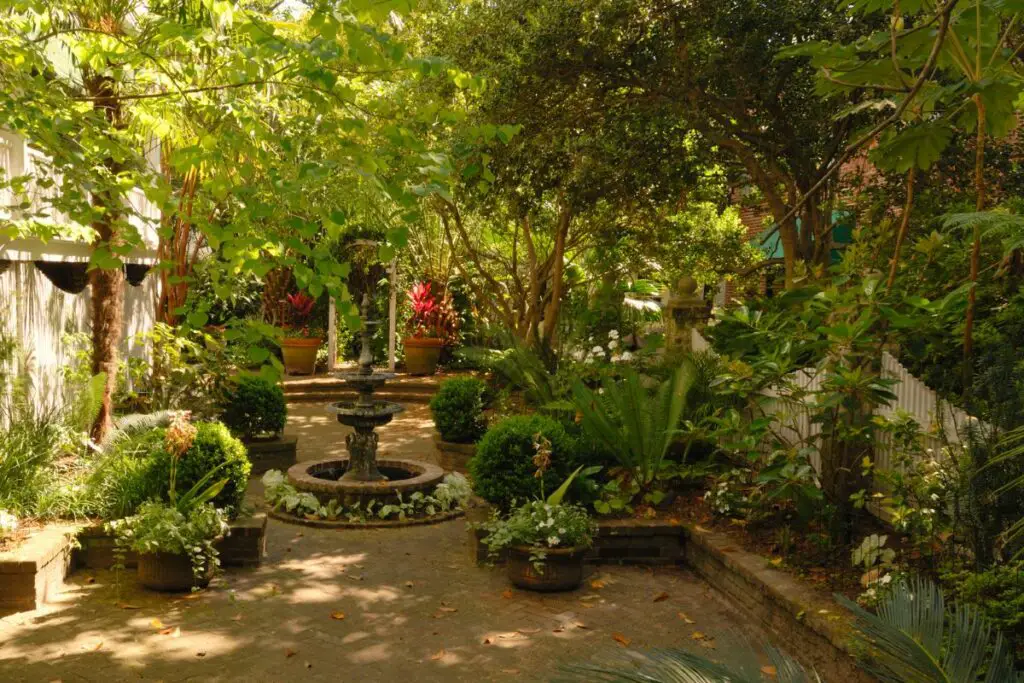Shade is an important element of any garden, providing a respite from the sun and creating a comfortable environment for plants to thrive.
But if you have limited space in your garden, it can be difficult to find room for larger trees that provide ample shade.
Fortunately, there are many small garden trees available that offer the same benefits as their larger counterparts while taking up minimal space.
In this article, we will explore how to maximize shade with small garden trees by discussing tips on planting and care as well as how to choose the right tree for your shaded garden so you can unlock all of its potential benefits!

Table of Contents
Maximize Shade with Small Garden Trees: Tips for Planting and Care
Maximizing shade in your garden can be a tricky task, but small garden trees are an excellent way to achieve this.
Not only do they provide much-needed relief from the sun’s rays, but they also add a touch of beauty and character to your outdoor space. Planting and caring for these trees is not difficult if you follow some simple tips.
When selecting small garden trees for shade, consider their mature size as well as their growth rate. Choose varieties that will fit into the available space without overcrowding or becoming too large over time.
Also, look at how quickly they grow so you can plan accordingly when it comes to pruning and maintenance needs down the road.
Once you’ve chosen your tree species, make sure it is planted in an area with plenty of sunlight exposure throughout the day – ideally four hours or more per day – while still providing adequate protection from windy conditions which could damage its branches or leaves over time.
Make sure there is enough room around the base of each tree so that roots have room to expand without competing with other plants nearby for resources such as water and nutrients from soil amendments like compost or fertilizer applications during planting season.
Prices pulled from the Amazon Product Advertising API on:
Product prices and availability are accurate as of the date/time indicated and are subject to change. Any price and availability information displayed on [relevant Amazon Site(s), as applicable] at the time of purchase will apply to the purchase of this product.
We find food spikes work best for small trees in your garden. We’ve provided a link above.
Proper watering techniques are essential when growing any type of plant including small garden trees for shade; however, because these types tend to require less frequent irrigation than other plants due to their slow growth rate – aim for about once every two weeks – it’s important not to overwater them either!
Additionally, mulching around each tree helps retain moisture levels in the soil while also reducing weed competition near its root system which could otherwise inhibit healthy development over time.
Finally, regular pruning should be done on all types of shrubs and trees alike; however, since smaller varieties may take longer periods between trimmings (i. e., up to three years), patience is key here!
Prune away deadwood whenever possible by cutting back branches close to where they meet trunk lines; this will help promote new growth while maintaining desired shapes throughout the seasons ahead!
How to Choose the Right Small Tree for Your Shaded Garden
Choosing the right small tree for your shaded garden can be a challenging task. With so many varieties of trees available, it is important to consider factors such as size, shape, and light requirements before making your selection.
Here are some tips to help you choose the perfect small tree for your shaded garden:
1. Consider Size: When selecting a small tree for a shaded garden, make sure that its mature height will not exceed the height of nearby structures or obstruct views from windows or other areas within the landscape.
2. Think About Shape: Choose trees with an upright form if you want to create vertical interest in your landscape; conversely select those with spreading branches if you’re looking to provide more horizontal coverage in an area where there is limited space available.
3. Light Requirements: Shade-tolerant species are best suited for gardens located in areas that receive little direct sunlight throughout most of the day; however they may require supplemental lighting during periods when natural light levels drop significantly due to weather conditions or seasonal changes (e.g. winter).
On the other hand, sun-loving species should be planted in sunny spots where they can get plenty of direct sunlight on most days throughout their growing season (spring through fall).
4. Soil Conditions: Make sure that soil conditions match what each particular type of tree requires – e..g acidic vs alkaline soil – otherwise it won’t thrive and could eventually die off prematurely due to lack of proper nutrition and hydration.
Additionally, pay attention to whether drainage is adequate since waterlogged soils tend to cause root rot which leads plants to decline over time.
By taking these factors into account when choosing a small tree for your shaded garden, you can ensure that it will thrive and bring beauty & life into this special part of nature!
Unlock the Benefits of Shade-Providing Trees in a Limited Space
Creating shade in a limited space can be challenging, but it doesn’t have to be. Shade-providing trees are an ideal solution for small gardens and outdoor spaces because they provide both beauty and functionality.
With the right selection of trees, you can unlock the benefits of shade while adding visual interest to your garden or outdoor area.
When choosing small garden trees for shade, consider their size at maturity as well as how much sun they need to thrive.
Trees such as Japanese maples or dogwood varieties are excellent choices since they don’t grow too large and require minimal sunlight exposure.
Additionally, these types of trees often feature beautiful foliage that adds color and texture to your landscape design without taking up too much space.
You may also want to consider evergreen species like cedar or cypress if you’re looking for year-round coverage from the sun’s rays in a limited area; however, keep in mind that these types of plants tend to grow larger than other varieties so make sure you select one with appropriate dimensions for your available space before planting it!
In addition to providing protection from direct sunlight during hot summer days, strategically placed small garden trees can also help reduce energy costs by blocking out wind gusts which would otherwise cause air conditioning units to work harder than necessary – thus saving money on utility bills over time!
Finally, when planted close together (but not overcrowded) along walkways or patios – these lovely little tree specimens create an inviting atmosphere perfect for entertaining guests outdoors throughout any season!
Conclusion
In conclusion, small garden trees for shade provide a beautiful and practical solution for shading your outdoor space.
With a variety of options to choose from, you can find the perfect tree that fits your unique style and needs.
Whether you have a small patio or a large yard, these trees offer the perfect combination of beauty and functionality, making your shaded garden a true oasis.
- How to Build a Planter Box for Bamboo: A Step-by-Step Guide

- Can Robotic Lawnmowers Handle Steep Slopes?

- Do You Need a Specific Lawn for a Robotic Lawnmower? Expert Advice

- Are Robotic Lawnmowers Safe for Pets and Children? Safety Features of Robotic Lawnmowers

- Why Use Robotic Lawnmowers? Advantages of Using a Robotic Lawnmower

- Is the GARDENA SILENO City 300 Cordless or Corded? A Clear Answer















